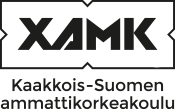GIS and Remote Sensing (5 cr)
Code: YT00AF78-3005
General information
Enrollment
06.04.2022 - 22.04.2022
Timing
29.08.2022 - 18.12.2022
Number of ECTS credits allocated
5 op
Mode of delivery
Contact teaching
Campus
Mikkeli Campus
Teaching languages
- English
Seats
20 - 40
Degree programmes
- Degree Programme in Environmental Technology
Teachers
- Shakil Regmi
Teacher in charge
Hannu Numminen
Groups
-
YTMI20KPEnvironmental Technology, full-time studies
Objective
You know what geospatial data, geographic information systems (GIS) and remote
sensing methods mean.
You can describe how to use such systems.
You can collect geospatial data and make digital maps.
You know how to make information queries and analyses using geospatial data.
You can use geospatial data in environmental research.
Content
What are geospatial data and geographic information systems (GIS).
How can remote sensing and global position systems be utilized?
How is geospatial data collected and how are digital maps made?
How is geospatial data used in environmental research?
What are the development visions in the field of GIS and remote sensing?
Materials
Video and written tutorials are provided along with extra resources in Learn.
Teaching methods
Work week-based learning pathway:
Objectives of the course (You are familiar with various vector and raster spatial data sets and spatial data analyses in the environmental field.
1) Exercises based on contact teaching and independent work with current spatial data and software in the field of the environment.
2) You will use publicly available data for analysis of both vector and satellite imageries.
3) The instructions are conducted on the ArcGIS (ArcMap) platform.
4) Practical tasks and Written exams are part of the course.
The implementation of the course starts on August 28, 2022.
Employer connections
Application of literature information to practical work examples.
Exam schedules
Will be decided in the first meeting.
Student workload
In addition to the contact lessons, approx. 110 hours of independent work are required to prepare for the assignments and exams required in the course.
Content scheduling
The course consists of lectures, research and task examples and seminars within the context of the environmental application of GIS and remote sensing with a focus on various spatial analytics methodologies.
Evaluation scale
1-5
Assessment methods and criteria
Exercises and assignments are available during the course as well as a written exam.
